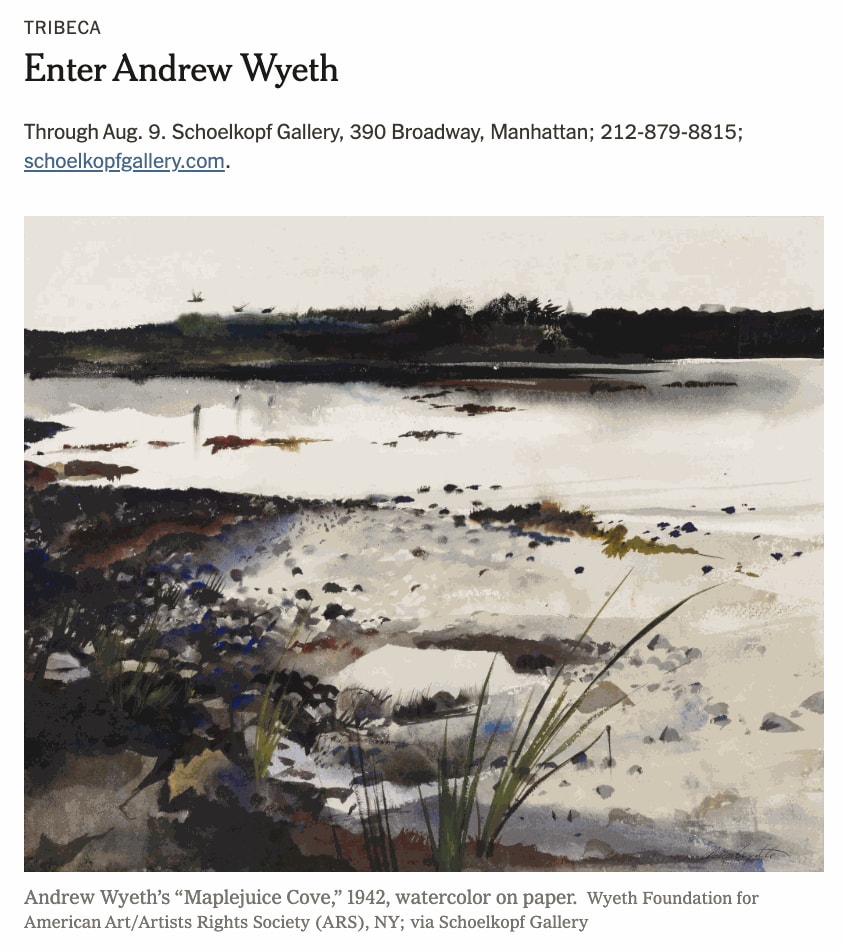
'Before becoming America’s revivalist in the matte tones of egg tempera, Andrew Wyeth debuted at the Macbeth Gallery in 1937, age 20, with watercolor landscapes. Watercolor is cheap and portable, but in pigments that thin each stroke means commitment. Less is more, instinct reigns. Wyeth knew it, and the four early watercolors that kick off Schoelkopf’s mini retrospective — 20 works on paper and canvas — reveal an economy of brush strokes verging on chaos.
His riverbank “Maplejuice Cove” (1942) is a wash of umber diluted almost to off-white. Two swaths of black suggest a near and a far shore, but a few confetti-like details in dry-brush are what turn the empty space into depth. Machine-gun blasts of blue make river stones in a shallow end. Three stiff, grassy strokes convert a patch of blank space into a puddle. Up top, stabs of green and brown become birds in flight once he’s dragged their reflections down into the surface of the river with a speed of hand that seems to match theirs.
Beside fireworks like those, even the mature Wyeth of austere realism looks like a daredevil. In 1972, when he hits a crease in the page during a pencil portrait — one of four in this show — he scrapes his pencil along it to pronounce a wayward strand of the sitter’s hair, the way you’d take a rubbing from a coin. “Left Hook” (1984) is a bleak winter landscape, but blank patches in the dead log at center capture the glare from a sun he has kept out of frame. In the field just beyond the log, Wyeth scrapes a pen nib or other such sharp thing to rake up fresh white pulp from his paper: light glinting off grass.
You’re as old as you feel, and in the deep range of this small show Wyeth’s decades of dry precision owe much to his youthful baptism by water. ' WALKER MIMMS


